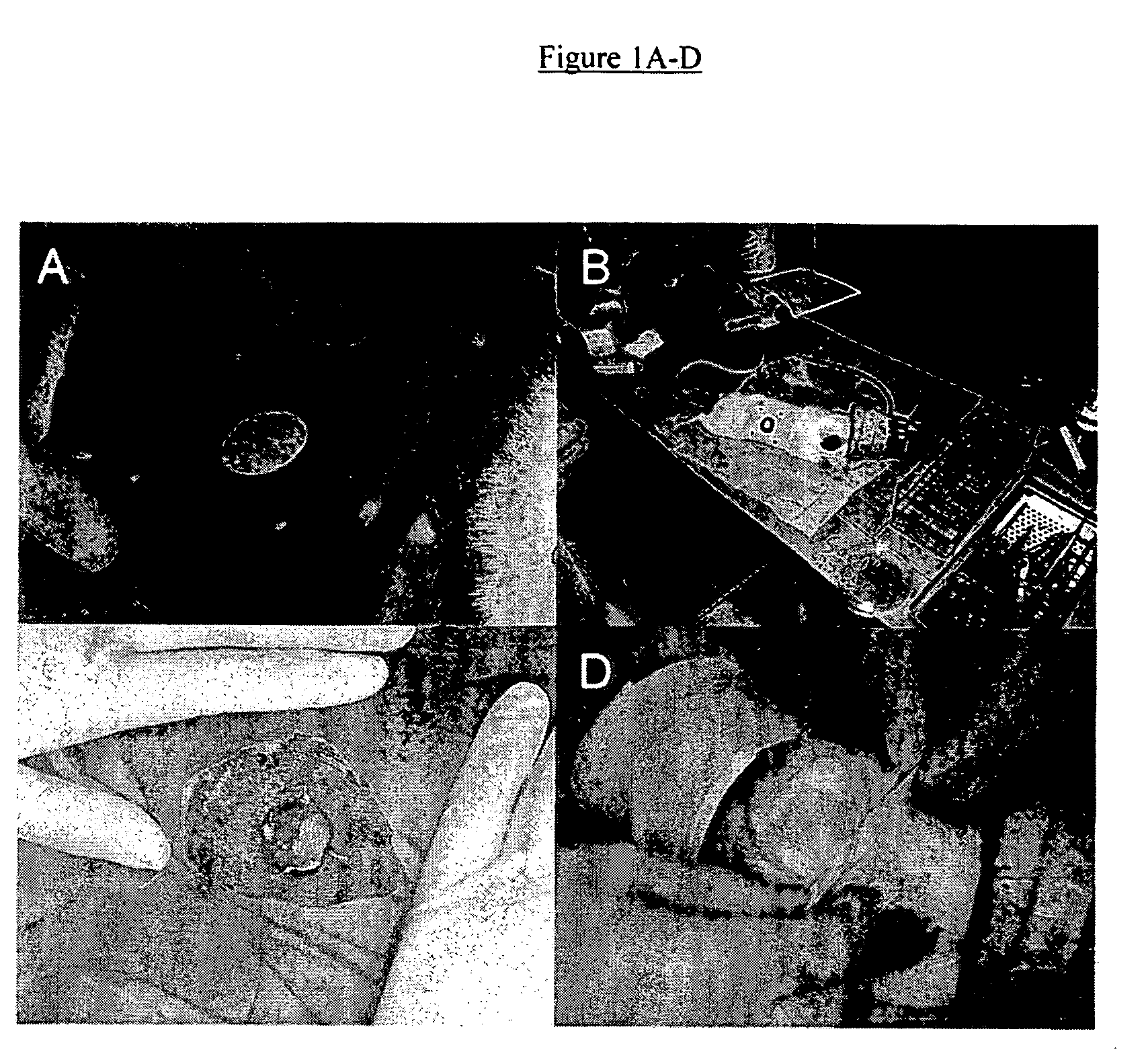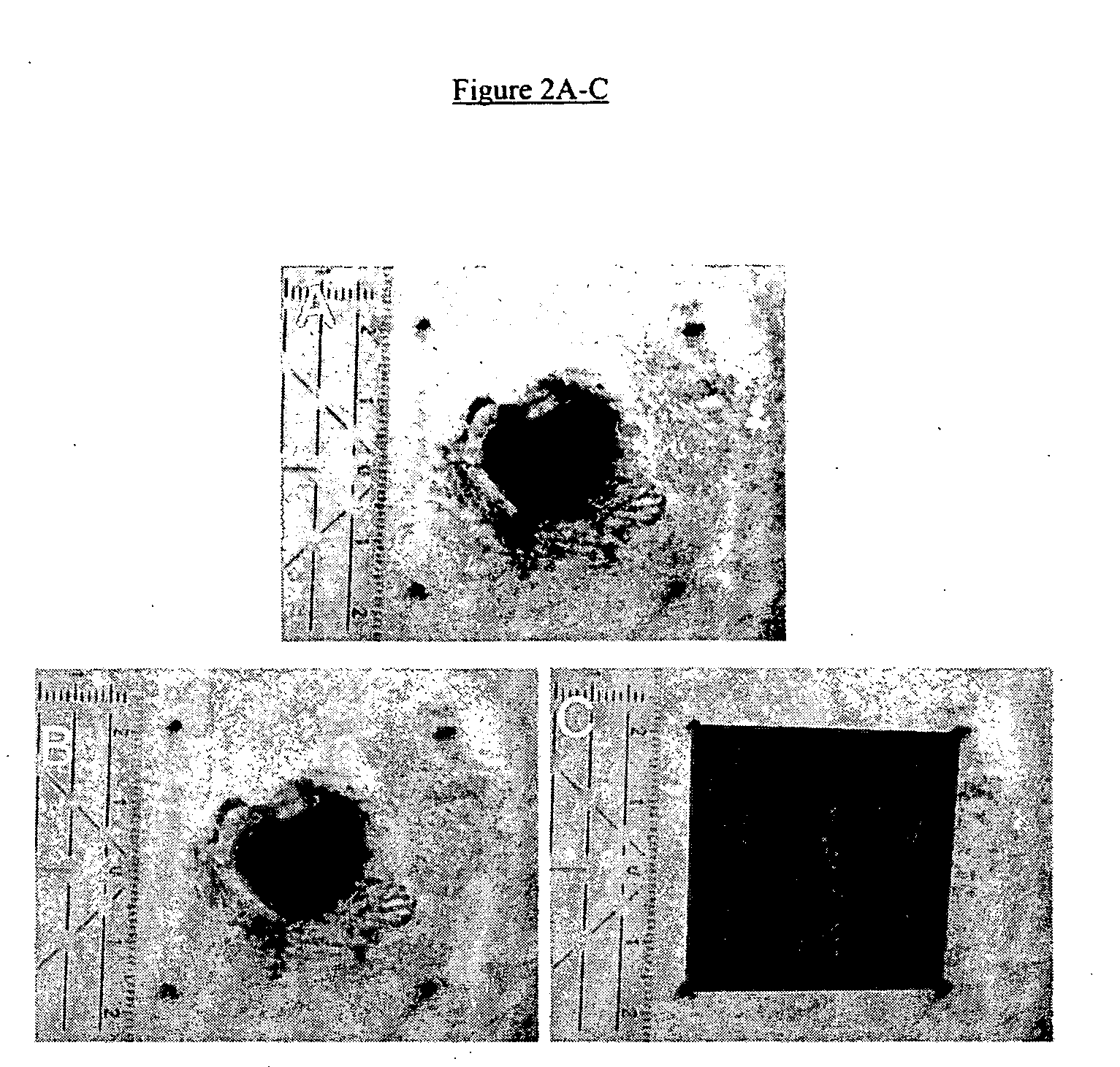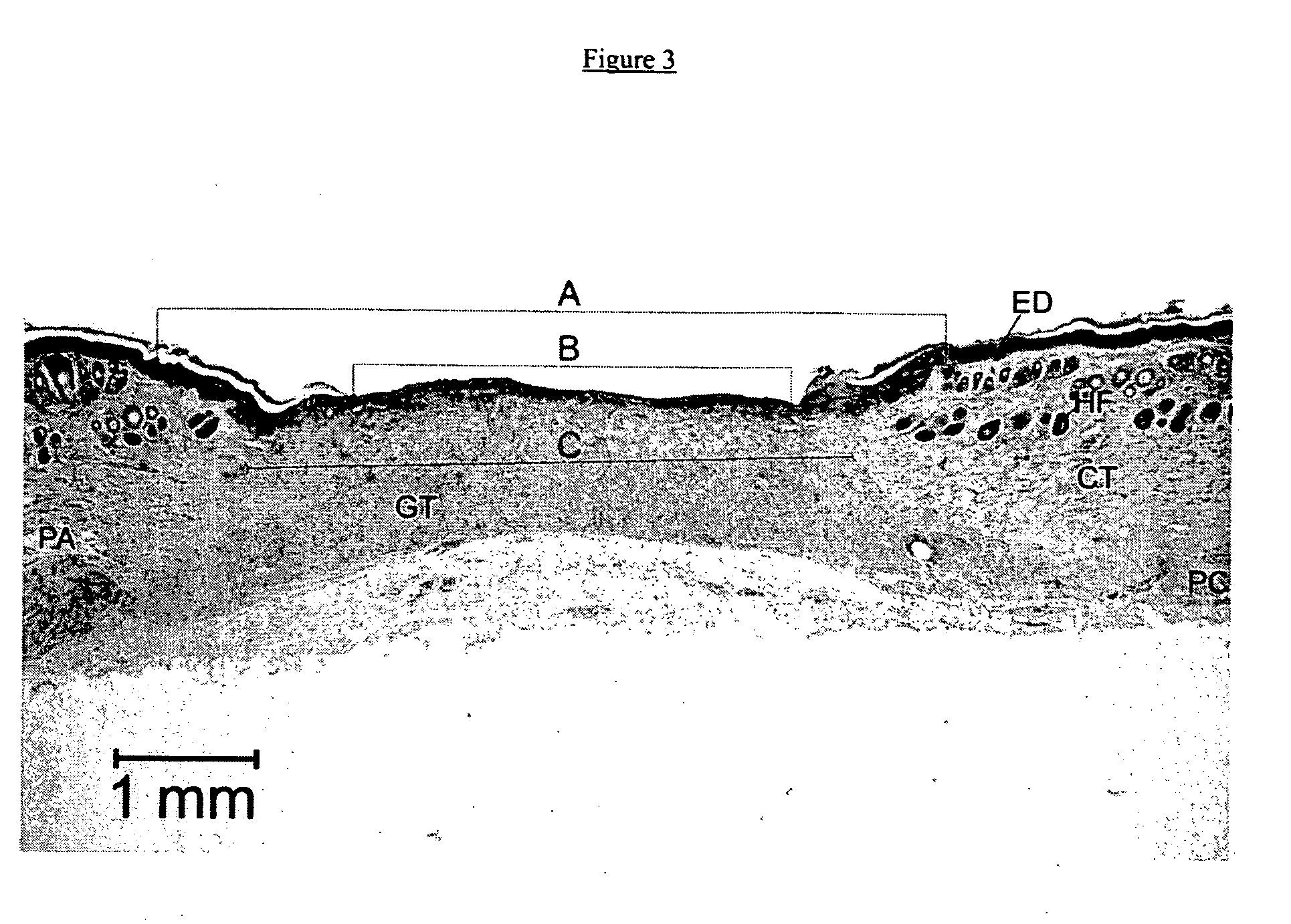Methods for treatment of wounds using time release compositions
a composition and time-release technology, applied in the field of wound treatment, can solve the problems of slow healing of wounds, preventing healing altogether, and breakdown of newly-regenerated tissue, and achieve the effect of improving the efficacy of wound healing
- Summary
- Abstract
- Description
- Claims
- Application Information
AI Technical Summary
Benefits of technology
Problems solved by technology
Method used
Image
Examples
example 1
[0040] A study was performed on the efficacy of PHI-5 in an immediate release formulation to treat full thickness cutaneous wounds in a standardized animal model. Pre-operatively, the animals were shaved thoroughly. Circular full-thickness cutaneous wounds extending to the panniculus carnosus were created on the right flank of each guinea pig, using aseptical techniques. Then, micro-grooved silicone rubber membranes were sutured onto the wound, containing 0 (controls), 1.25, 5.00, or 10.00 μg PHI-5 in an immediate release formulation. The silicone substrates implanted with the side containing PHI-5 making contact with the wound to simulate insertion of a PHI-5 impregnated membrane with a medical implant. The procedures and results of the study are explained in the following paragraphs:
[0041] Substrates with PHI-5
[0042] Medical-grade silicone rubber (polydimethylsiloxane, NuSil MED-4211, NuSil Technology, CA, USA) was mixed as prescribed. To obtain a single-sided microtexture, the ...
example 2
[0062] A long acting time release formulation of PHI-5 is prepared using a biodegradable polymer to microencapsulate the PHI-5 ions. The aliquots of the long acting dosage formulation containing 1.25, 5.00, 10.00, 15.00, 20.00 and 25.00 μg of the PHI-5 composition are loaded onto microtextured silicon membranes. The wound is cleaned with rubbing alcohol to remove any contamination and the silicone substrates were sutured onto the wound, with the side containing PHI-5 making contact with the wound. Subsequently, wounds were covered with semi-permeable polyurethane dressings and the PHI-5 loaded silicone membranes are left on the wound for one week, two weeks and one month. The results with the sustained release formulation show significant improvements in wound healing.
example 3
[0063] A long acting time release formulation of PHI-5 is prepared using a collagen delivery system. Then aliquots of the long acting dosage formulation containing 1.25, 5.00, 10.00, 15.00, 20.00 and 25.00 μg of the PHI-5 composition are loaded onto microtextured silicon membranes. The wound is cleaned with rubbing alcohol to remove any contamination and the silicone substrates were sutured onto the wound, with the side containing PHI-5 making contact with the wound. Subsequently, wounds were covered with semi-permeable polyurethane dressings which are left on the wound for one week. After one week, the silicone membranes are removed and replaced with new silicone membranes loaded with the same dosage of the PHI-5 formulation in the collagen delivery system. The second silicone membrane is sutured onto the wound site and covered with semi-permeable polyurethane dressings which are left on the wound for one week. The results with multiple uninterrupted applications of the sustained r...
PUM
| Property | Measurement | Unit |
|---|---|---|
| Time | aaaaa | aaaaa |
| Time | aaaaa | aaaaa |
| Time | aaaaa | aaaaa |
Abstract
Description
Claims
Application Information
 Login to View More
Login to View More - R&D
- Intellectual Property
- Life Sciences
- Materials
- Tech Scout
- Unparalleled Data Quality
- Higher Quality Content
- 60% Fewer Hallucinations
Browse by: Latest US Patents, China's latest patents, Technical Efficacy Thesaurus, Application Domain, Technology Topic, Popular Technical Reports.
© 2025 PatSnap. All rights reserved.Legal|Privacy policy|Modern Slavery Act Transparency Statement|Sitemap|About US| Contact US: help@patsnap.com



